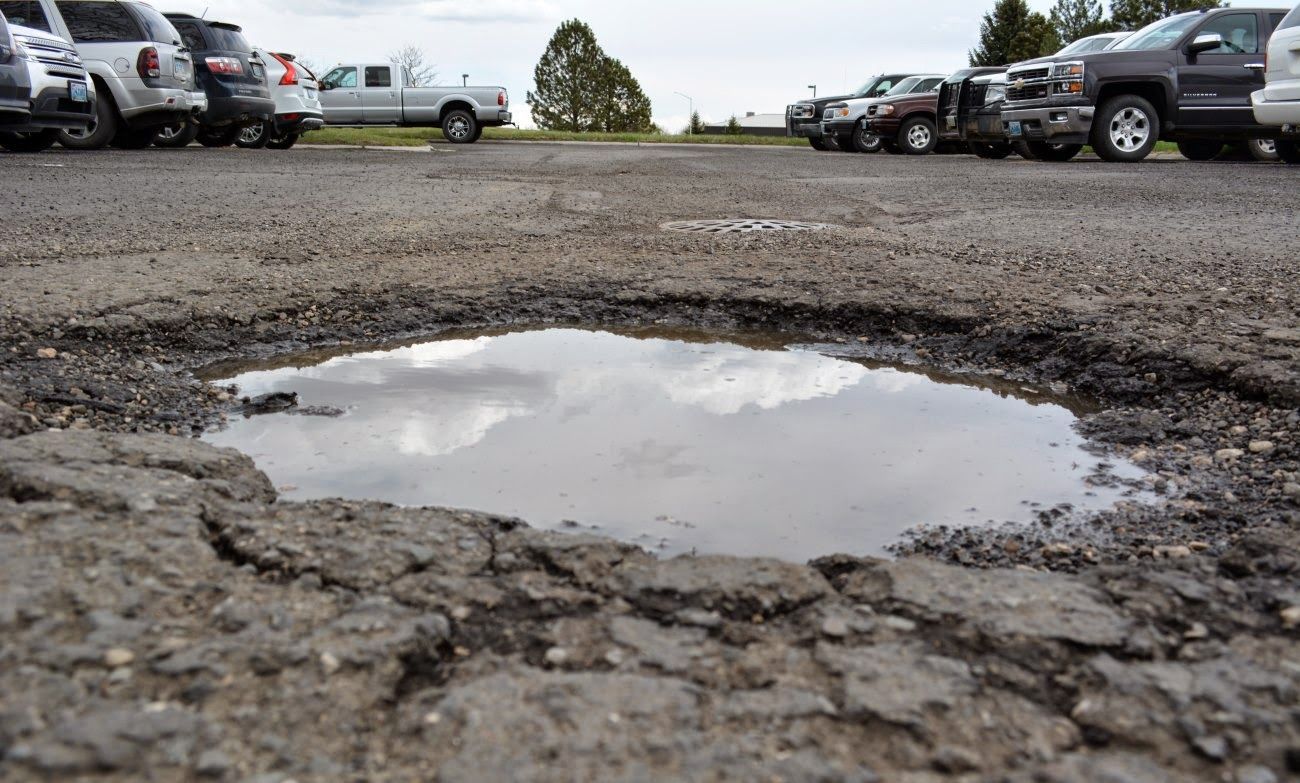Getting Deep With Potholes: What causes Potholes, how to fix Potholes, and how to prevent Potholes

Potholes are a common sight on roads, particularly during the winter and spring months. These pesky craters can cause serious damage to vehicles, injure pedestrians and cyclists, and create a host of other problems for motorists. Keep on reading as Omega explores the causes of potholes, the problems potholes create, the repair process of potholes, and how to prevent potholes from appearing.
What are potholes Anyway?
Potholes are holes or depressions that form in the surface of roads, typically as a result of repeated freezing and thawing cycles. During the winter months, water seeps into cracks and crevices in the road surface, and when temperatures drop, the water freezes and expands, causing the road surface to crack and break apart. As vehicles drive over these weakened areas, the pavement eventually breaks down, creating potholes. Potholes can vary in size and depth, from small divots to large craters that can be several feet wide and several inches deep. They can be found on both asphalt and concrete surfaces, and are particularly prevalent on roads that are heavily trafficked, poorly maintained, or subject to extreme weather conditions.
Why Is it important to have potholes Fixed?
Potholes can cause a wide range of problems for motorists and pedestrians alike. For drivers, potholes can damage tires, wheels, and suspension systems, leading to expensive repairs or even accidents. For pedestrians and cyclists, potholes can be a serious tripping hazard, and can cause injuries ranging from sprains and strains to broken bones and head trauma. In fact, many companies in the past years have been sued by customers for not keeping up their asphalt parking lots. Kroger was sued in 2019 for $2,000,000 due to a pothole that they knew about but neglected to repair. Read about the story here.
How Do I fix potholes?
The process of repairing potholes typically involves several steps, each of which is designed to restore the surface to a safe and functional condition. Here is an overview of the most common pothole repair methods:
- Inspection: Before any repairs can be made, the damaged area must be thoroughly inspected to determine the extent of the damage and the appropriate repair method.
- Cleaning: Once the damaged area has been identified, it must be cleaned of any loose debris, such as rocks and asphalt fragments.
- Tack coating: A tack coat is a layer of adhesive material that is applied to the damaged area to help the new asphalt or concrete adhere to the old surface.
- Filling: Once the tack coat has been applied, the pothole is filled with new asphalt, which is smoothed and leveled to create a seamless surface.
- Compaction: The new material is then compacted to ensure that it is tightly packed and will not shift or settle over time.
- Sealing: Finally, the repaired area is sealed with a layer of asphalt sealer, which helps to protect the new surface from water damage and other environmental factors.
The time and cost involved in the pothole repair process can vary depending on the size and depth of the pothole, as well as the repair method used.
What Should I ask to a line striping company that I think I might utilize?
Business owners should consider using a local line striping company that uses only high-quality striping paint. Ask them what kind of paint they use and if they water it down. Cheap, low-quality, or watered down paint may look appealing on the price, but it will quickly fade and wear away, leading to confusion and potential safety hazards. High-quality paint, non watered down paint will last longer and maintain its visibility, ensuring that the parking lot remains safe and functional. Always ask your line striping company how much a second coat would cost. Although this is more money up front, it saves money in the long run since the line striping company does not have to take two individual trips along with two different preparations.
How Do I Prevent potholes from appearing in my asphalt?
While repairing potholes is an important part of maintaining safe and functional roads, prevention is ultimately the best solution. To prevent potholes from forming in the first place, it is important to maintain parking lots and residential driveways, regularly, and fix small cracks and fissures before they become larger problems. One way to do this is sealcoating asphalt to prevent oxidation and cover it with a layer to protect it from weather, gas, and oils.
Potholes are a common and persistent problem in parking lots and residential driveways around the world, causing damage to vehicles and posing safety risks to motorists, cyclists, and pedestrians. The repair process for potholes involves several steps, including inspection, cleaning, tack coating, filling, compaction, and sealing. While repairing potholes is essential to maintaining safe and functional parking lots and driveways, prevention is ultimately the best solution. Let Omega help you properly maintain your asphalt. Give us a call at 501-414-6359 so we can formulate an asphalt maintenance plan and fix any potholes or cracks that you might have.
